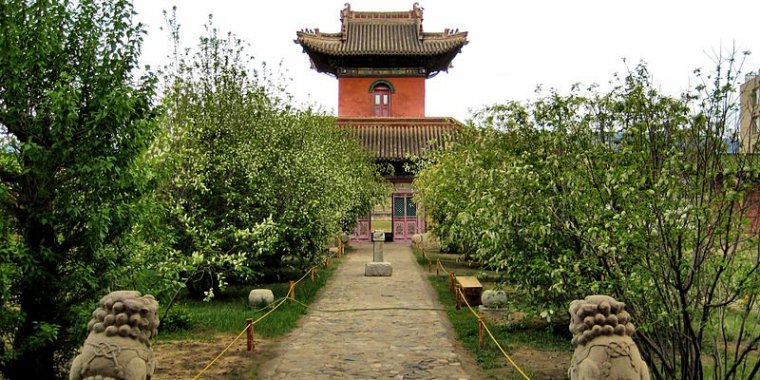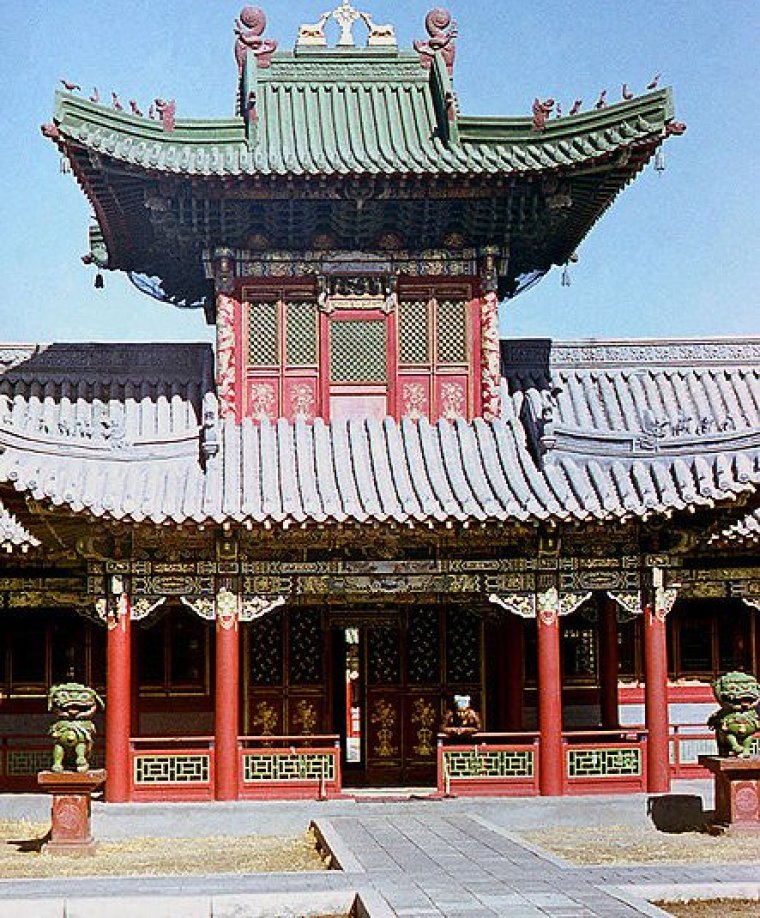| Published in Attractions / Places of Interest |
The Choijin Lama Temple (Чойжин ламын сүм), Ulaanbaatar, Mongolia
The Choijin Lama Temple (Mongolian: Чойжин ламын сүм; Official name given by Manchu Qing Emperor Guangxu (1871 – 1908): Mongolian: Өршөөлийг хөгжүүлэгч сүм; English; Compassion Perfection Temple, Chinese:興仁寺) is a Buddhist monastery in Ulaanbaatar, the capital of Mongolia.
The complex consists of six temples originally occupied by the brother of the ruler the Eighth Bogd Jetsun Dampa Khan, Choijin Lama Luvsankhaidav, who was the state oracle and 'Precious Wisdom and Clear Devotion' Khutugtu at the time.
The complex was begun in 1904 and completed in 1908, in honor of the State Oracle Lama Lubsanhaidub /Losang Kedrup/, brother of the eighth Bogd Khan.
The Choijin Lama Museum was originally a Buddhist temple complex, consisting of one main and five branch temples. It was active until 1937, when it was closed during the height of Communist repression against Buddhism and other religious traditions. In 1938 the complex was re-established.
The main temple features an 18th-century gilt statue of Buddha Sakyamuni with a statue of Choijin Lama Luvsankhaidav on the Buddha's right and the embalmed corpse of Baldan Choephel on his left. In addition, the temple boasts a copious collection of religious instruments, thangka paintings, silk embroideries, wood carvings, statues, and a biggest collection of cham dance masks).
The annex to the temple contains an other temple, named 'Zankhang' and a central square in which Choijin Lama Luvsankhaidav performed Oracle trance rituals.
The Zuu Temple, dedicated to the Buddha Shakyamuni features papier-mache sculptures of Buddha in the past, present, and future. The 16 arhat disciples of Buddha appear on the temple walls with four Maharajas protectors shown sitting in caves on either side of the door.
The Yidam Temple was used as a place of prayer by Choijin Lama Luvsankhaidav, and therefore closed to the public. In its center is a gilt bronze sculpture of one of the 84 Indian yogis, or Mahasiddha. Also depicted are the tantric gods Kalacakra, Mahamaya, Vajradhara and others with their shakti or consorts in postures of meditation that symbolize power and strength.
The fourth temple, the temple of amugulang or peace, is dedicated to the first Mongolian reincarnation of Boghda Jevzundamba, Undur Gegeen Zanabazar, (1635-1724).
The museum, it preserves a rich heritage of Buddhist artifacts.
Located in central Ulaanbaatar directly south of Sukhbaatar square, the museum is open year-round (with reduced hours during the winter months).
Explanations of the almost overwhelming collection are not as detailed as they could be, but each temple has room attendants who can provide additional material. The museum itself and its objects also show the re-emergence of Buddhism in Mongolia after Communist repression, with a particularly interesting display on Buddhist cham dancing and its modern revival. (Wikipedia)
YOU MAY ALSO LIKE





 If you own or manage a travel-related business such as a hotel, a bed-and-breakfast, a restaurant, a pub or a cafeteria, you can create a web page for your business for free on Titi Tudorancea Travel Info. » |


